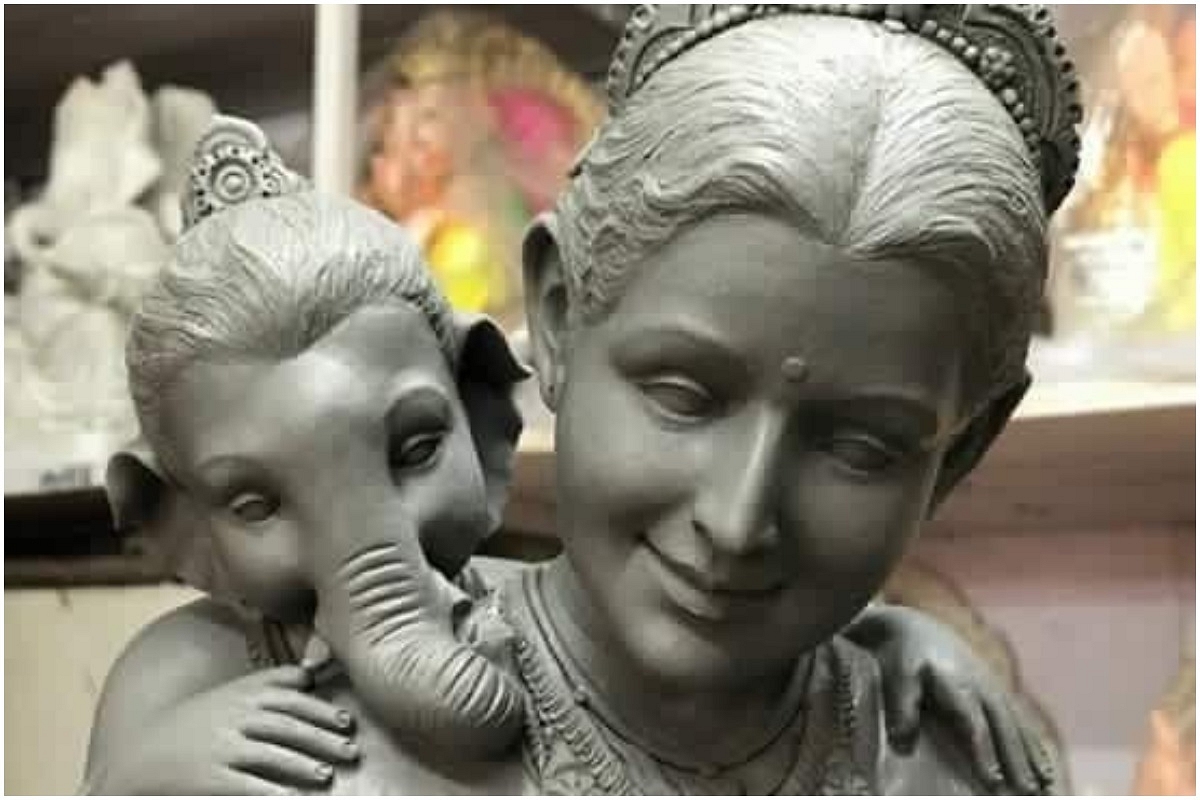Culture
She Connects The Womb To The Fetus, Brahman To Jiva: The Meaning Of 'Uma'
- She is Uma, the first symbol for the manifestation of the unmanifest; the placenta which connects 'Brahman' (womb) to 'jiva' (fetus).

Ganesha with Uma
The Devas were rejoicing about their victories. The victories of the Devas are the moral and ethical wins. They are the victories over the senses and instincts. The victories for justice and liberty. As they rejoiced, they became egoistic.
Then, before them appeared a strange being. They wanted to know who he was. They sent Agni and Agni boasted of his ability to burn and consume anything. The strange being simply placed a blade of grass before Agni and asked him to burn it. Agni could not. Agni returned humbled.
Then went Vayu who too boasted of his ability to blow away anything and everything. The strange being again asked Vayu to move the blade of grass which Vayu could not.
She is the one who makes Indra understand that the Devas derive their power because they are grounded in Brahman.
Who is this Goddess Uma?
Prof. Sashi Bhusan Dasgupta in his monograph on the evolution of Mother worship in India writes:
Prof. Das Gupta also points out that Sayanacharya explains the name Soma, of Taittiriya Aranyaka, as Shiva accompanied by Uma. Here Uma stands for ‘the knowledge of Brahman.’
Taking these and also the Kena Upanishad together, in which the Goddess appears as Uma-Himavati, a case can be made for the original name to be associated with what Prof. Das Gupta calls a ‘later esoteric interpretation.’
The Kena Upanishad the story is highly symbolic and one could say, even philosophically sophisticated. Swami Krishnananda Saraswati (1922-2001) of the Divine Life Society and a disciple of Swami Sivananda, points out that the three Devas made as actors in the Upanishad story namely Agni, Vayu and Indra represent the speech, prana and jiva respectively. While speech and prana return without success, the egoistic contained jiva cannot see the Brahman at all.
Brahman is considered the universal womb in Hindu spirituality. Through consciousness, the individual self grows spiritually inside the womb but it is the womb that sustains the fetus. Here the fetus does not get delivered separately but individuates to realize itself in its essence as the very womb that sustains it. What connects the fetus and womb is the placenta. If jiva is the fetus and Brahman is the womb then knowledge of Brahman is the placenta.
Sure enough one of the popular ancient Goddesses - from Turkey to Mongolia- was Umai the deified placenta. The Oxford Companion to World Mythology says this: ‘The first of the Siberian earth deities seems to have been an *Earth Mother who sits at the roots of the great axis tree. ... The ancient Turks worshipped *Umai (Umay), a childbirth goddess who was of primary importance and whose name meant 'source.' In Central-Asian Kyrgyzstan where She is ‘Umai Ene’, She is also the sacred fire goddess of the hearth apart from the Goddess of placenta.
What unites sacred fire and placenta? The wisdom.
Today, medical science speaks of ‘prescient placenta’ ( ‘The Scientist’, August 1, 2015). This is what Christopher Coe, who has been studying the primate placenta for years, has to write about what he has learnt:
Given the fact that the placenta is much more than a mere physical connection between the mother’s womb and the fetus, and is a dynamic interphase which is alive and even ‘prescient’ in its own way, no wonder the primordial human psyche saw in it the manifestation of divine feminine.
Incidentally, it is in the very ‘Dravidian’ Tamil alone that Uma is called Umai or Umaiammay, very close to Her supposedly Central Asian name. (That should actually make the advocates of Steppe-invaders hypothesis a little uncomfortable).
Introducing ElectionsHQ + 50 Ground Reports Project
The 2024 elections might seem easy to guess, but there are some important questions that shouldn't be missed.
Do freebies still sway voters? Do people prioritise infrastructure when voting? How will Punjab vote?
The answers to these questions provide great insights into where we, as a country, are headed in the years to come.
Swarajya is starting a project with an aim to do 50 solid ground stories and a smart commentary service on WhatsApp, a one-of-a-kind. We'd love your support during this election season.
Click below to contribute.
Latest